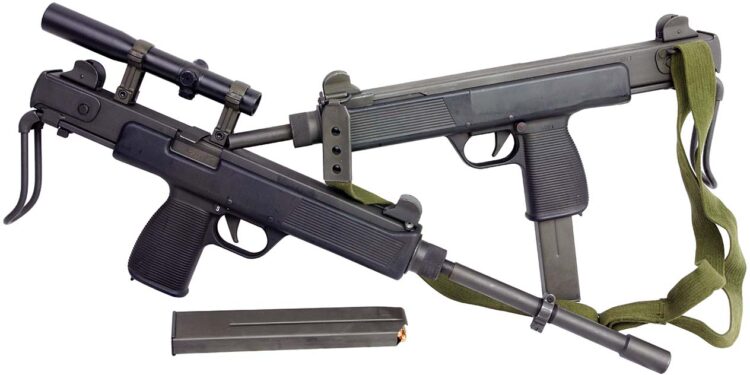By Michael Heidler
In the years after World War II, there was no need for new weapons in Austria. Both Russia and the Western Allies provided large quantities of their weapons, such as the PPSh-41 or M3A1. It was not until the mid-1960s that efforts were again made to develop domestic and more modern submachine guns. Unfortunately, the desired success was denied.
Austria’s armaments industry had suffered great damage in the last years of WWII and lay largely in ruins. So for the time being it was not possible to think about its own weapon production on a larger scale. However, the armed units that were gradually set up could be equipped without any problems, thanks to a large number of wartime weapons, mainly of foreign production.
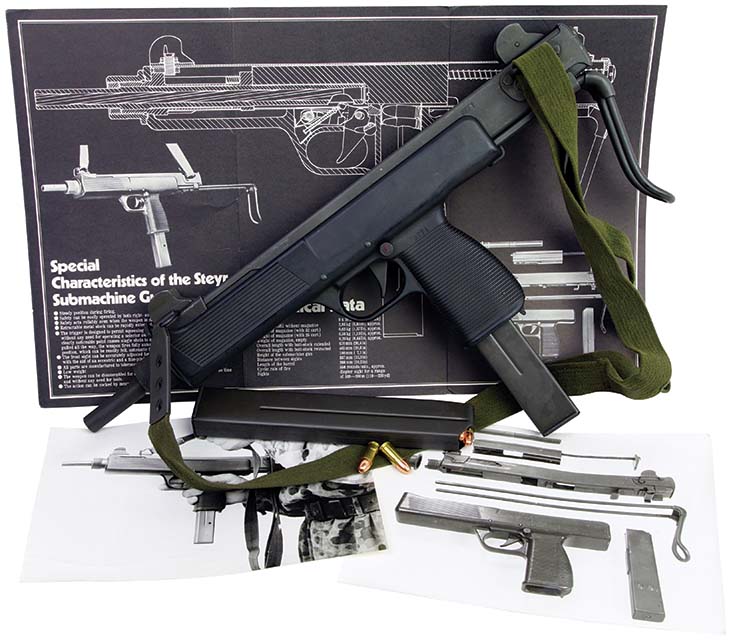
On August 1, 1952, the B-Gendarmerie was officially established. Unlike the police force, which was usually armed with old pistols and carbines, the B-Gendarmerie received light infantry weapons from U.S. stocks—especially M1 Carbines and M1 Garands including accessories. At the end of 1953, the B-Gendarmerie consisted of over 4,000 men. Due to the existence of this organization, it was possible to build up the new Österreichisches Bundesheer (Austrian Armed Forces) relatively quickly after the conclusion of the State Treaty on May 15, 1955. Its armament again came from Allied depots.
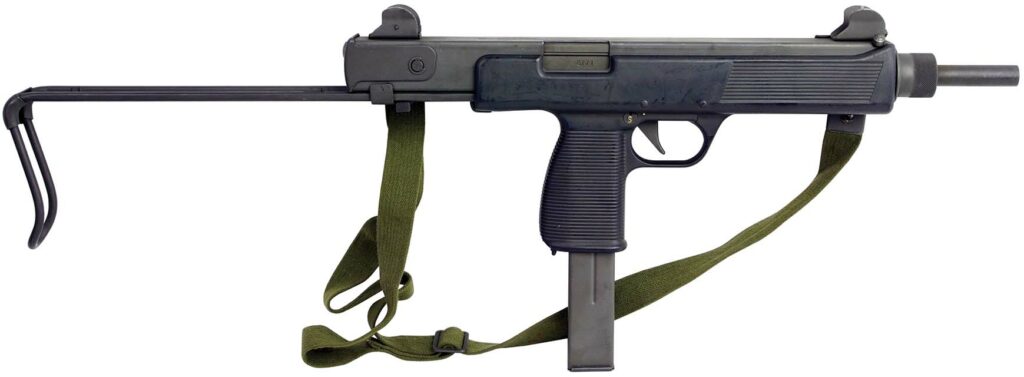
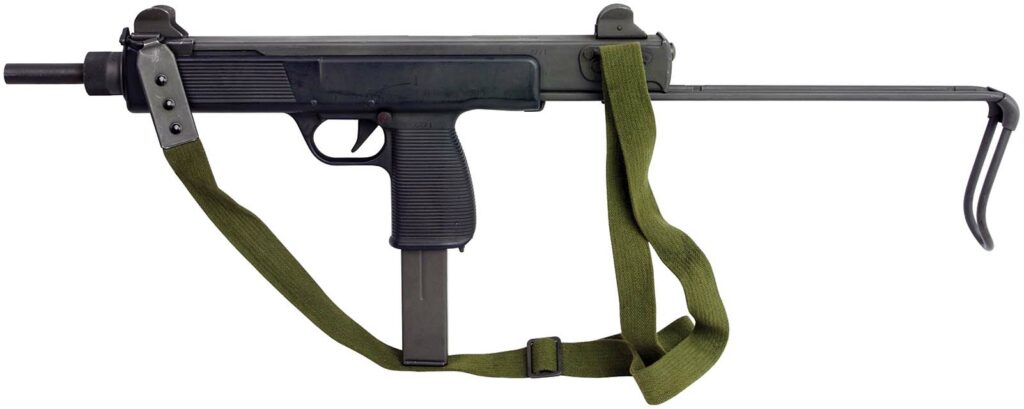
The MPi 69 is kept relatively smooth; there are only a few protruding knobs or screws. For cocking, the carrying sling is attached to the bolt. There is no conventional cocking handle.
In the meantime, much had happened internationally in the field of weapons technology. Austria, too, was striving for more modern armament from the 1960s onwards. Attempts to convert the Russian PPSh-41 to 9x19mm caliber and replacing the worn wooden stocks with plastic ones were only half-hearted. At the traditional company Steyr-Daimler-Puch AG, the two engineers Karl Wagner and Karl Moser had been working on a new submachine gun for some time, with particular attention to production costs and functional safety. In 1968 the Austrian Army received three prototypes of this weapon for evaluation.
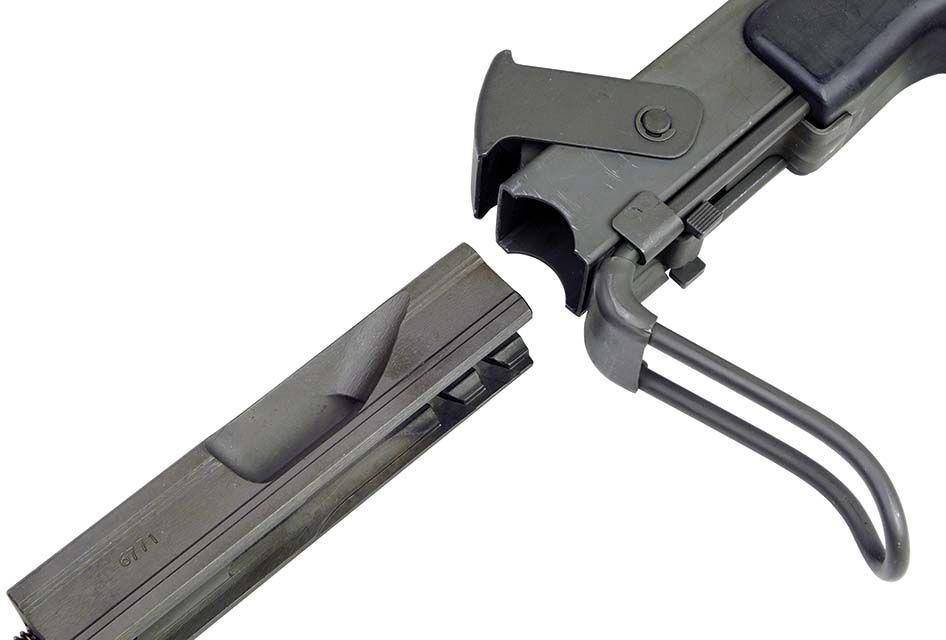
Apparently, the submachine gun made a good impression, because the following year the Austrian Army ordered another 50 units for a more extensive troop trial. There were two magazines for each weapon, one with 25 rounds and one with 32 rounds. The Heeressport- und Nahkampfschule (Army Sports and Close Combat School) of the Jagdkommando (JaKdo) was provided with 30 submachine guns. The Jagdkommando is a special unit of the Austrian Army, stationed in Wiener Neustadt. Its tasks include the rescue of hostages abroad, the fight against terrorism, as well as building protection of Austrian embassies and operations in war or crises zones. The 20 other weapons were sed for testing as emergency armament for the crews of the tank destroyer Kürassier (Jagdpanzer K), also newly developed and built by Steyr-Daimler-Puch.

In reference to the year of its first use, the submachine gun was given the designation “MP 69.” The design of the weapon was a simple blowback mechanism, firing from the open bolt. The receiver with a square cross-section is made from sheet metal. The complete pistol grip and a large part of the receiver are coated with impact-resistant plastic. Thanks to a swivel-mounted piece of sheet metal at the rear end, there is no unscrewable end cap to lose. The breechblock encloses the barrel with its front half, so that a large part of its mass is located in the center of gravity. This saves on length of the receiver, and the weapon is more pleasant to shoot in fully automatic mode. A push button allows switching between safe (right position, white S), semi-automatic fire (middle position) and full-automatic fire (left position, red D). A noteworthy feature is the manner of cocking the weapon: the carrying sling is attached to the bolt. There is no common cocking handle. The shooter simply grasps the sling and pulls it back.
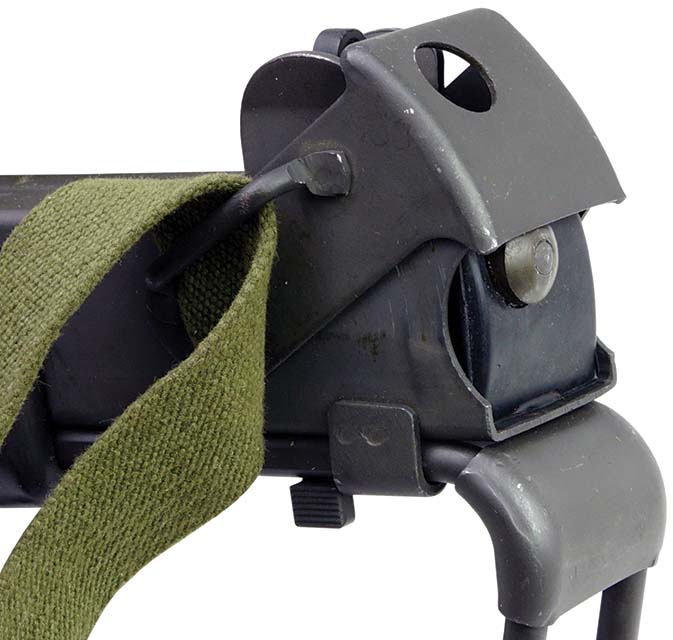
During the troop trials, the MP 69 made a good impression, and the soldiers involved were satisfied with it. Steyr-Daimler-Puch seemed to have had little doubt at the time about its imminent adoption in the Austrian Army and was already producing stock. In 1970 there were already more than 5,000 pieces ready for delivery, but orders from Austria were still missing. On the other hand, the export business performed a little better: Greece bought 415 weapons for the Athens police; Thailand also ordered for its police; and larger quantities were sold to the Near and Middle East, where they still today occasionally show up in the hands of local fighters.
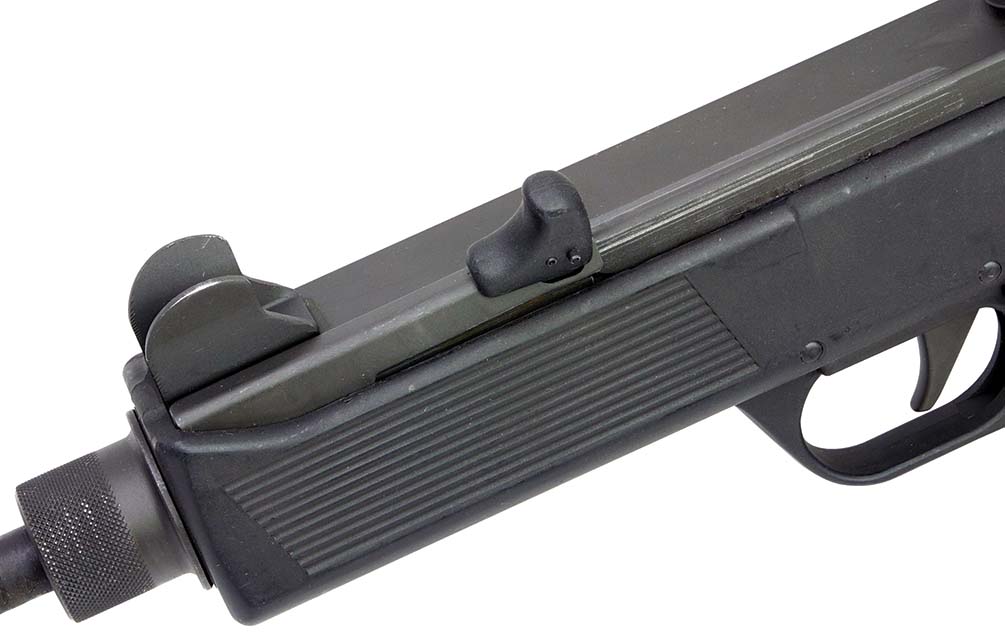
More than 10 years later, minor improvements and modifications of the MPi 69 led to the visually very similar MPi 81. The most striking difference is that it again had a conventional cocking handle on the left side of the receiver. In addition, a scope with 1.5x magnification could be attached. For this purpose, two disc-shaped mounting points were permanently glued on the top of the receiver as standard. A sheet metal strip above the ejection port served as an empty case deflector and guided the cases downwards. Breakthroughs in the two struts of the scope mount allowed aiming over the rear and front sight if necessary. By means of an extension sleeve that could be clamped onto the barrel, the weapon could also be used for shooting from special hatches in armoured vehicles. A bayonet was issued, but it was mainly used as a tool. The firing rate of 750 rpm was significantly higher than that of the MPi 69 with only 400 rpm.
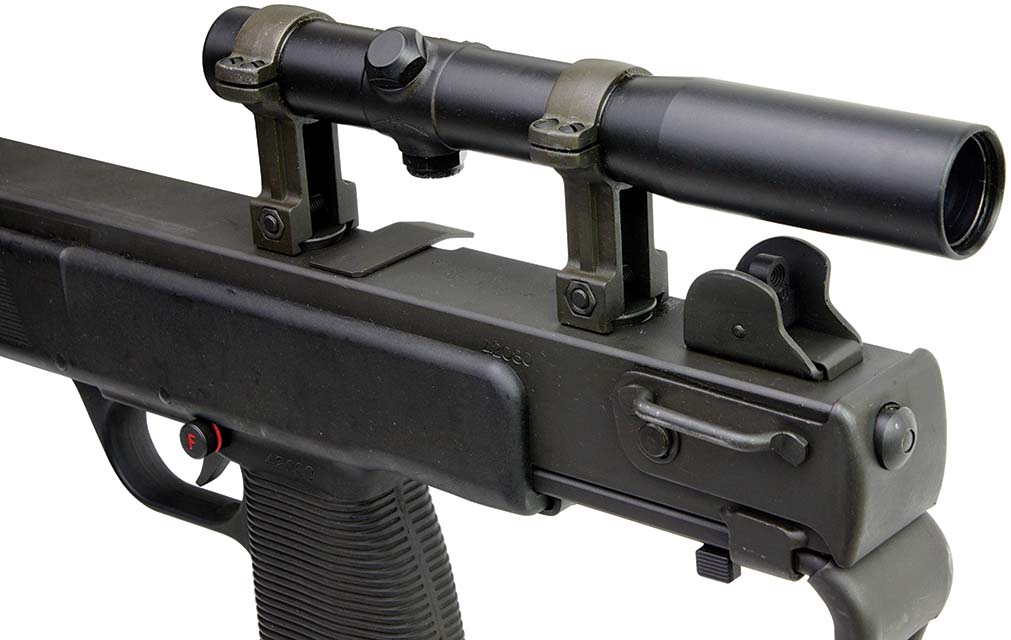
Exports went to Argentina, Greece and Saudi Arabia. In Austria, the MPi 81 was only used to a limited extent. Steyr-Daimler-Puch itself was partly to blame for the poor sales of both models in its own country, because since the late 1960s, the new Armee-Universal-Gewehr AUG (Army Universal Rifle) in bullpup design and caliber 5.56x45mm had been in development there. Among other things, the MPi 69 was intended to replace the submachine guns, and understandably, potential customers wanted to wait and see the result of this development before purchasing larger numbers of MPi 69s. In 1977, the Austrian Army decided to introduce the AUG as the new standard assault rifle with the designation “Sturmgewehr 77.” Due to its different variations, there was no longer a need for an extra submachine gun.
TECHNICAL DATA
| MPi 69 | MPi 81 | |
|---|---|---|
| Caliber | 9x19mm | 9x19mm |
| Length (stock extended) | 26.4in | 26.6in |
| Length (stock retracted) | 18.3in | 18.3in |
| Length of barrel | 10.0in | 10.0in |
| Weight (empty) | 7.1lb | 6.3lb |
| Magazine capacity | 25 and 32 rounds | 25 and 32 rounds |
| Rate of fire | 400 rounds/min. | 750 rounds/min. |
| This article first appeared in Small Arms Review V24N8 (Oct 2020) |



